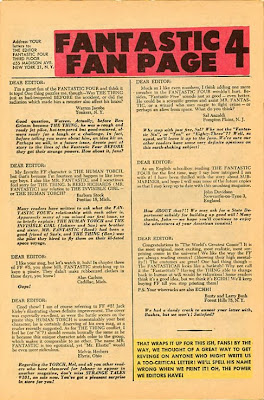And sometimes, ideas can be thrust upon an unfortunate artist (or writer) by an over-enthusiastic editor. Goodness knows, I've found myself on both sides of that particular fence.
Sometimes an editor would recycle an idea over and over - for example, a hero behind bars, and sometimes an artist would re-use something that had been especially effective for them in the past, like a "camera" angle or a particular layout.
Here, then, is a quick dash through several examples of ideas that have cropped up on more than one comic cover over the last 40 or 50 years ...
COVER TROPES AND OTHER CLICHES
Back in the late 1950s and early 1960s, king-of-the-hill DC Comics used to use a system whereby their editors would dream up a cover idea and have their chosen artist render it. Then, they'd have a story conference with their writer and end up with a story based on the (hopefully) dynamic and intriguing idea depicted in the cover. Sometimes this worked, sometimes it didn't. And nowhere was this more evident than in the Superman line of titles edited by the infamous Mort Weisinger.Over the 20 or so years that Weisinger ruled over the empire of Superman, he would often commission covers then have a story written to fit. It's probably this process that contributed mightily to the recurring themes and ideas that cropped up time and again in the Superman family of titles.
By today's standards and sensitivities, some of the ideas behind the covers and stories might seem a tad ... inappropriate today.
 |
| In DC's world, it seemed perfectly acceptable to make obesity a laughing matter. The 1958 Lois Lane was the earliest I could find, The Flash cover is 1960 and the JLA one is 1961. |
 |
| In fact the weight card must have been pretty successful for DC because they played it over and over again. Jimmy Olsen and Adventure Comics from 1962, and Superman from 1969 (yep, 1969). |
And rejection and alienation is something we all understand ...
But Superboy seemed to have to put up with rejection more than most. In fact, rejection was a prevalent theme in the Superman mythos, stemming, I assume, from his "rejection" by Jor-El and Lara when they shot him off into space in a small rocket.
Pointing out these recurring themes in DC comic covers is a bit like shooting fish in a barrel. So let me leave further examples for another post and finish up with a look at a cover concept that has been used by almost every player in the comics business across several decades ...
IN THE MOUTH OF MADNESS
There's no doubt that dinosaurs fire the imagination of every kid. So it's no surprise that comics editors have never been shy about putting dinosaurs on comic covers since the genre began. But putting the hero, literally, in the mouth of the dinosaur is a pretty common cover design. Here's a few I've come across on my travels ... |
| During the 1960s, DC Comics and Dell would return often to dinosaurs in the series and on their covers. |
 |
| But in the 1970s, it was Marvel who dominated the dinosaur stakes. |
 |
| In the 1980s, the hero-in-the-dinosaur's-mouth situation could happen in the distant past or in the far-flung future. |
 |
| In the 1990s, there were Equal Opportunities for heroines and heroes to be devoured. |
 |
| And by the time we reached the 21st Century, it was open season on comic characters. |
Next: The Mighty Marvel cover corner box













































